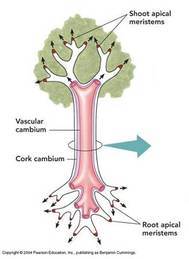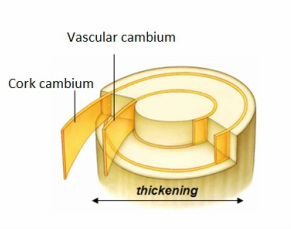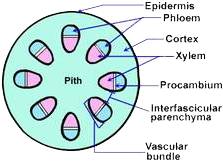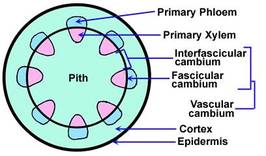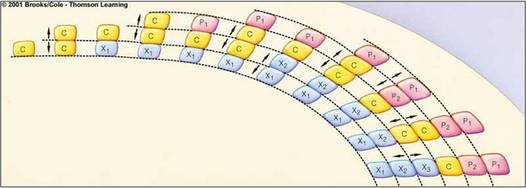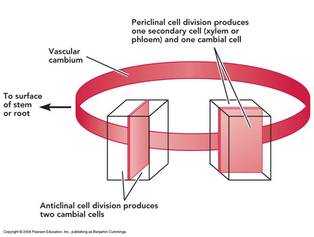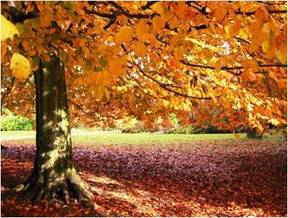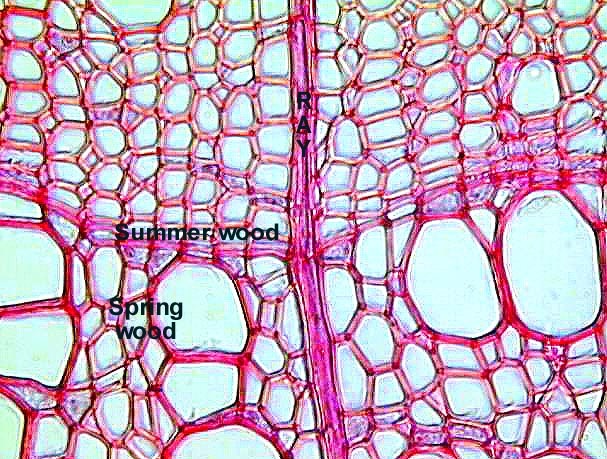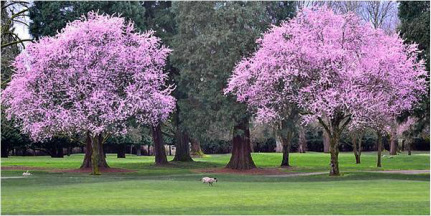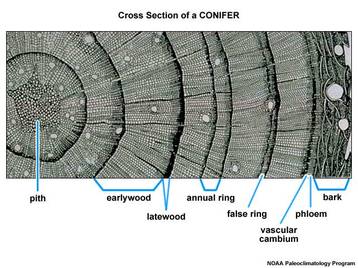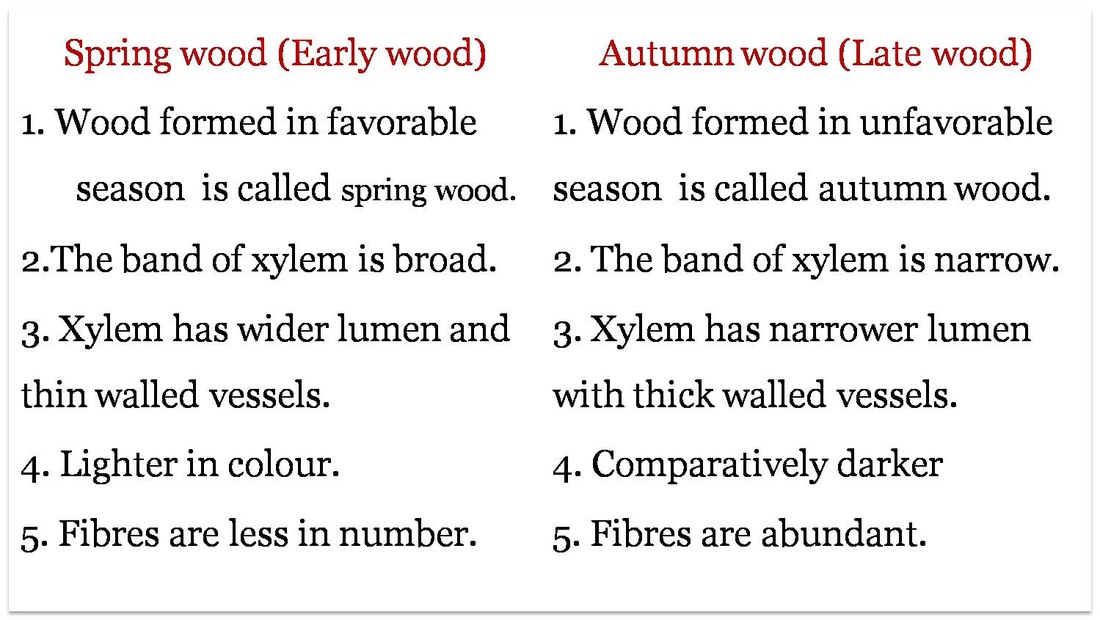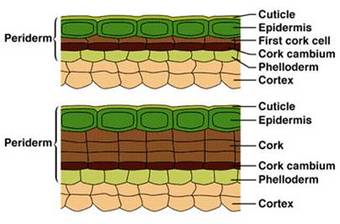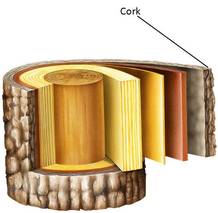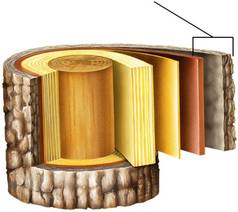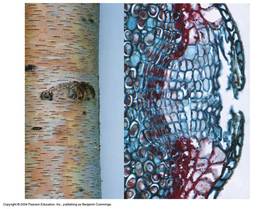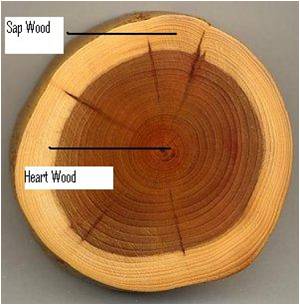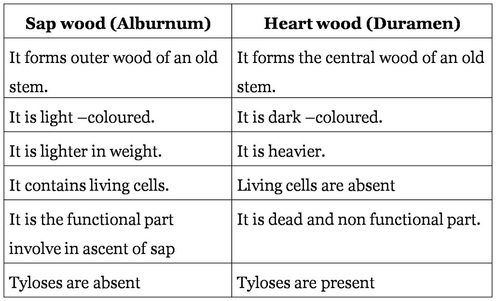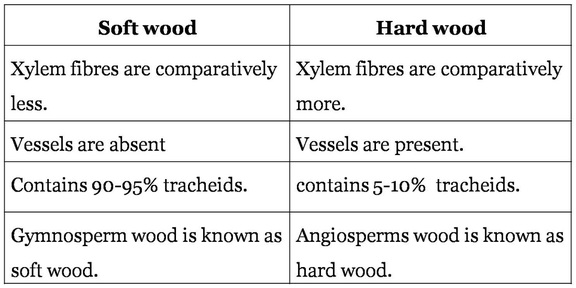Plant tissue Anatomical differences
ISC 12>STRUCTURE AND FUNCTION OF PLANTS>1. PLANT ANATOMY
Class presentation |
Web links
|
Basic idea of secondary growth
Secondary growth:
Definition: Increase in girth or thickness of the plant axis due to activity of secondary or lateral meristems (the vascular and cork cambium) is called secondary growth.
Definition: Increase in girth or thickness of the plant axis due to activity of secondary or lateral meristems (the vascular and cork cambium) is called secondary growth.
Mechanism of secondary growth:
B) In extrastelar region by the phellogen.(cork cambium)
- The mature dicot stem shows secondary growth and increases in girth.
- This results by the activity of two lateral meristems--- vascular cambium and cork cambium or phellogen.
- Secondary growth occurs in two parts—
B) In extrastelar region by the phellogen.(cork cambium)
A) SEC. GROWTH IN STELAR REGION BY VASCULAR CAMBIUM
3. Formation of annual rings:
- The vascular cambium remains active throughout life.
- Activity of vascular cambium is affected by seasonal variations.
- Variation in activity is seen during different seasons, resulting in shape and structure of wood.
- Autumn wood (Late wood)
- Spring wood (Early wood)
|
Autumn wood (Late wood)
|
Spring wood (Early wood)
|
- By this way two bands of secondary xylem produced in a year.These two bands make an annual rings.
Differences between spring wood and autumn wood
B) Sec growth in extrastelar region by the phellogen.(cork cambium)
|
Board question: Give an account of the activity of cambium in the secondary growth of the stem.
(Diagrams accepted if relevant points shown)
- Secondary growth is due to vascular cambium and cork cambium.
- Vascular bundles are arranged in the form of a ring and have intrafascicular cambium between xylem and phloem.
- Interfascicular cambium develops between vascular bundles and complete ring of cambium develops.
- Vascular cambium cells divide and form new cells towards periphery as secondary phloem and new cells towards pith which develop into secondary xylem.
- Elongated parenchymatous cells between vascular bundles form secondary medullary rays for conducting food and water.
- Growth is seen as annual ring consisting of spring wood during favourable growth and autumn wood during unfavourable conditions.
- Secondary growth from within ruptures the epidermis and cortex outside.
- Outer layer of cortex becomes meristematic and becomes cork cambium.
- Cork cambium cells divides and form new cells towards periphery as a phellem (cork) and towards inner sides phellogen (secondary cortex).
(Diagrams accepted if relevant points shown)
|
1. Cork:
|
2. Bark
|
3. Lenticel
|
DIFFERENTIATE BETWEEN HEART WOOD AND SOFT WOOD
DIFFERENCES BETWEEN SOFT WOOD AND HARD WOOD
USES OF CORK
- Cork cells being highly suberised and thick-walled, cork is protective in function.
- Protects the inner tissues from the attacks of micro organisms.
